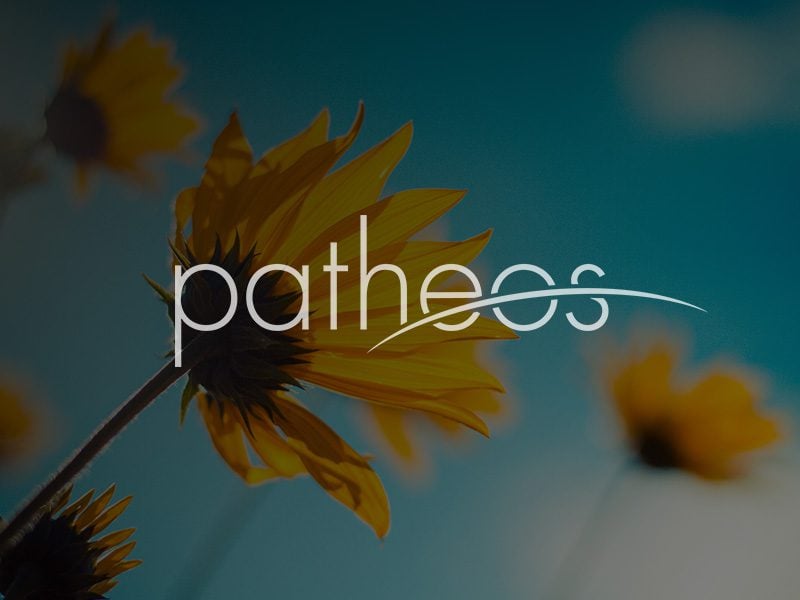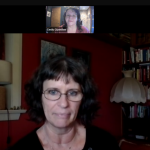Every Monday, Wednesday and Friday in December we will be asking people questions about Paganism and Pagan religions and culture. Want to weigh in? Find the next question at the bottom of this post!
There is a rather firm ideological and almost tribal divide between many of our traditions. Wiccans and Heathens, for example. Does this division serve a positive purpose? Or is the division harmful?
This so far has been an uncomfortable question and some people did not want to respond. There are those who deny a pan-Pagan community exists and discourage pan-Pagan efforts, advocating stronger division and more insular communities. I think there are pros and cons for when it comes to intra-Pagan cooperation and outreach. Traditions need to draw firm lines to maintain their unique identity, yet for both political and interfaith reasons we need to have a better understanding of each other so we can work together towards mutually beneficial goals, such as establishing Pagan military chaplains. I think I worded this question badlyand for that I apologize. perhaps I should have asked this instead:
How do we balance maintaining our unique traditions with intra-Pagan dialogue, projects and interfaith outreach? How do we assert our uniqueness while still working together towards mutually beneficial goals?
Here are the responses to the original question. Feel free to add your own response in comments.
Diotima Sophia writes:
Like almost anything, the divide between traditions can be either useful or harmful, depending on how it is used.
How it can be harmful, we all know – we need only look in the newspapers or turn on the TV or radio to see the results of religious disagreements. And often, the results are bloodiest between those whose religions ostensibly proclaim peace. However, I suspect this is merely because there are more people in those religions at the moment; left to themselves, humans will generally find something to fight with each other about, and religion is as good an excuse as any. The differences between our beliefs provide a simple rallying cry for hatred, segregation, what the sociologists call “othering” – which is a fancy name for the playground action of saying, “You are not one of us”. Adults, acting in precisely the same manner as Dr. Seuss’ star bellied sneetches.
However, these divisions can also be positive, or rather, can be used in a positive manner. Once one steps beyond the confines of the fanatic and the zealot, differences afford, at the most basic level, something to talk about. At higher levels, they provide that most human of elements: a platform for learning.
In the area where I live, I see people proclaiming their religious differences daily, and I realise how little I know. I have no idea if different coloured turbans, for instance, symbolise different things – there is something there for me to learn.
A teacher of my acquaintance was once bold enough to wear a symbol of his beliefs to school, and a student noticed his awen. Her question to him epitomises, for me, what ideological differences can mean, even if they so rarely do. She looked at the symbol, looked at her teacher, and said, “What does it require of you?”
And that, to me, is a useful starting point for ideological discussions – which are the best and brightest outcome of these differences. If we were to concentrate on what our beliefs require of us, and then to find out what the beliefs of others require of them, I’d suggest the result would be two-fold.
Firstly, we would learn about other ways of doing things, other ways of being, and in learning, we would almost certainly find a new respect for other ways – especially if the emphasis is on what those ways of being require of people.
Secondly, if we really were to articulate what it is our beliefs require of us, and share those requirements with others, we might be more tempted to live up to those requirements. And to support others, as they lived up to theirs.
Heady stuff – but certainly a better way forward than what we have now.
Morgan Daimler, gythia of the Stormlight Kindred, responds:
I think it depends on how the division is approached. It is healthy to have a clear sense of self and self-definition, but not when that identity is based off of not being someone else. I think the division between different traditions is healthy in the sense that each tradition should be unique and clearly it’s own entity; in other words each tradition should set its own boundaries for what that tradition is and isn’t and these definitions often divide one group from another. This becomes unhealthy when the view shifts from positive definitions of “we are this” to negatives; it is never constructive when a group creates a division by defining itself as not something else. Whether it’s Wiccans defining themselves as not Satanists, or Heathens defining themselves as not Wiccans, when a group defines itself with a “not” it automatically sets itself at odds with the group it isn’t and creates a false tension. This tension translates into a division that grows out of hostility and fear, not out of healthy self-definition. After all, if I am confident in what my tradition is then why should I feel the need to attack other people’s beliefs? Positive division nurtures respect of others, while negative division creates suspicion and defensiveness.
Kathy Nance writes:
My earliest experiences with Pagan groups were happily ecumenical.At that time in St. Louis, a group called the Council of Alternative Spiritual Traditions (C.A.S.T.) hosted monthly Open Full Moons, with a different group doing ritual in its way each month. Between 40 and 60 Pagans would attend. A few groups, like Diana’s Grove, would draw 80 or more.
Unfortunately, C.A.S.T. and the Open Full Moons are no more. The group fell to a combination familiar to many volunteer organizations—personality conflicts, volunteer burn-out, and financial difficulties. It did not fall to tribal differences.
The most successful event C.A.S.T. hosted was the annual St. Louis Pagan Picnic. It started as a small potluck, and today is a two-day festival drawing between 3,000 and 4,000 with no admission charge. It’s been operated most recently by Yarrow Coven and volunteers of various traditions, and this year was handed off to another cross-tradition group, St. Louis Pagan Events.
So in my experience, Pagans working together across traditions can do things of great value to their local communities. There were people, including me, who had never been to a ritual until we attended an Open Full Moon. There are people I meet every year at Pagan Picnic who’ve never seen another Pagan. They are ravenous for fellowship, desperate to know they’re not alone.
I remember being one of those people. I remember reading Drawing Down the Moon and assuming that all the Pagans must be in California, because there sure couldn’t be any in the conservative Midwest. It was years before I became spiritually hungry enough to forage for groups. In those intervening years, a couple large metaphysical shops opened in St. Louis which hosted classes and discussion groups for Pagans. Between those shops and the events hosted by groups of Pagans willing to set aside what I can only call doctrinal differences, I was able to find a spiritual home.
The groups that participated in Open Full Moons usually were covens and circles that practiced alone the rest of the year. I now work with a small group and communicate on line with others who follow our path. I find great fulfillment in this. But we have no illusions about being able to pull off a large annual festival or monthly open services. That kind of thing takes cooperation.
I recently had the good fortune to interview Starhawk. In part of the conversation, she lamented that there are currently no Pagan institutions comparable to those of other religious groups. No Pagan retirement or nursing homes or schools, for example. She said she thinks those projects will have to be among those undertaken by the next wave of Paganism.
I agree with her. And it will take cooperation among many paths to do that. As a faith path, we’re too new and too small for each little tribe to provide that kind of infrastructure to its members. It will take great maturity for us to cooperate on this scale. I have every confidence we can do it.
Tribes have one kind of strength. But a gathering of the tribes is mighty.
As for me? Well, every day I work with Catholics, Protestants, Mormons, Heathens, Hellenists and other religious folk. I have found it a blessing to be in friendly, constructive and open dialogue with other faiths, and I have found it actually makes me more grounded in and committed to my own. So many times I have found something of value in other religious traditions and my response is to search for it’s expression in my own religion. It’s given me a deeper appreciation and understanding of the expanses and limits of Wicca. By understanding traditions other than my own I become better at interacting with people of other faiths and explaining my own tradition to them.
Next question:
Assuming you are a convert to Paganism, how has your relation to, and perspective of, your former faith evolved?
If you’d like to weigh in just e-mail me your short response (250-500 words) before Dec 13th. It’s sfoster at patheos.com.











